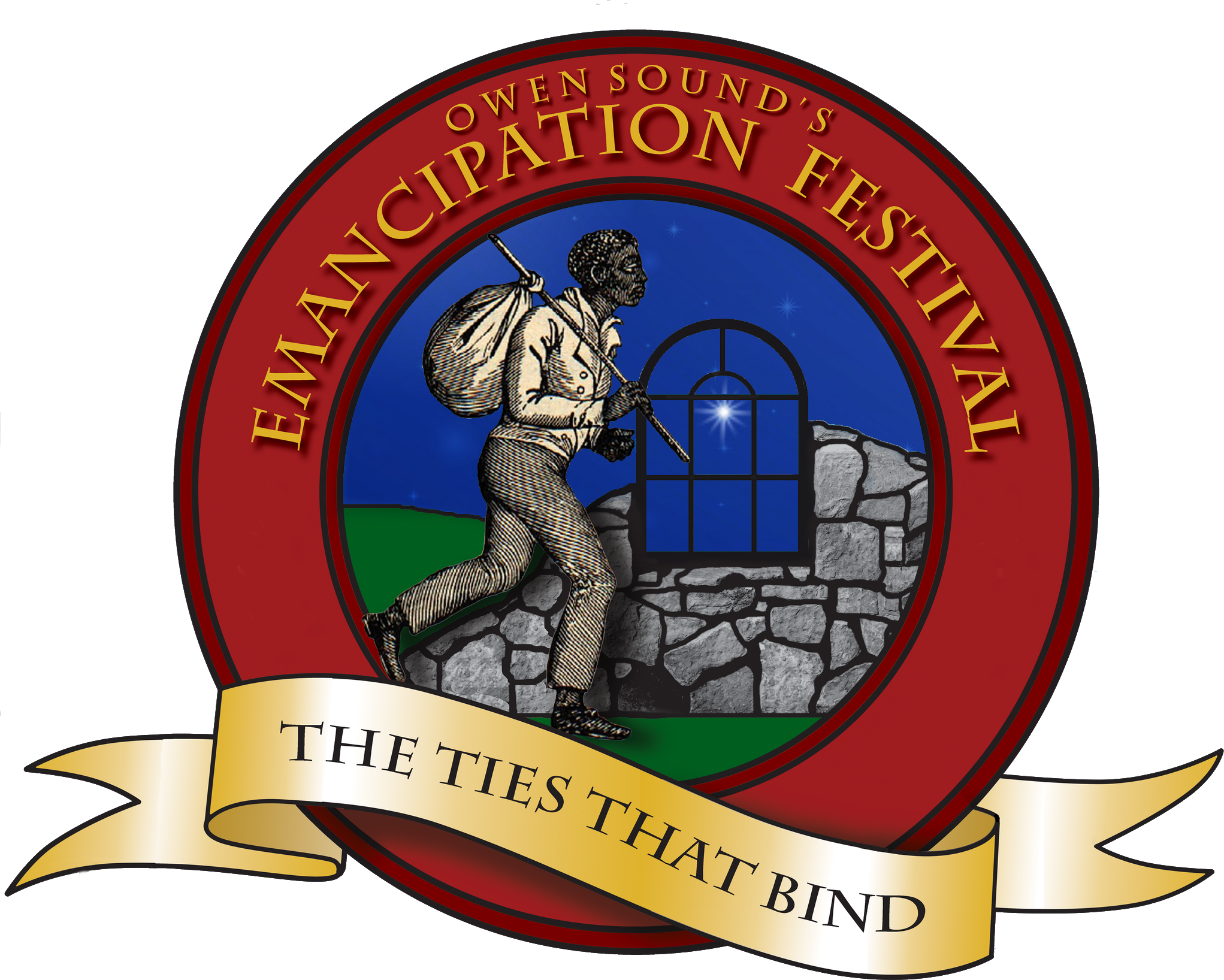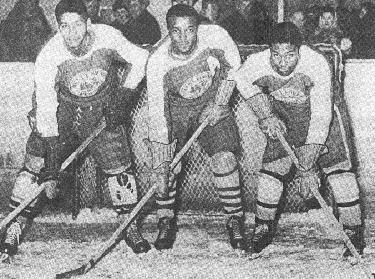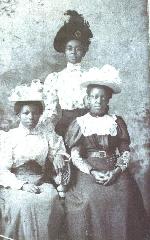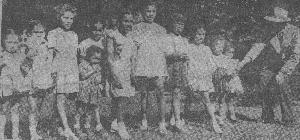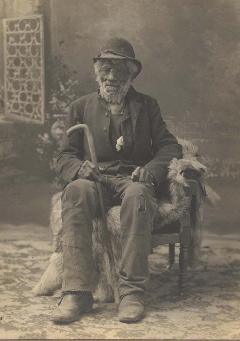Black History in Grey County
Material from Grey Roots Museum & Archives
Black citizens have been a part of Grey County, since the very first non-Native settlers arrived in the northernmost part of the Queen's Bush. Some of these early pioneers were born in Canada, whilst others had only recently slipped the bonds of slavery in the Upper South. All contributed significantly to the settlement of the last available land in southern Ontario in the mid-nineteenth century.
The Black Flashes from Mount Forest
After a long and arduous journey to freedom, the escaped slaves arrived to discover even greater challenges awaited them. Racism frequently overshadowed every effort the Black settlers made to begin a new life. Insecurity and uncertainty in border cities often propelled people to move further north into Ontario. Indeed, one of Grey County's most prominent early Black citizens, John Hall, had been born in Amherstburg, Ontario, but was captured in a border raid as a young man and sold into slavery in Kentucky.
Several important settlements existed in Grey County: Priceville, Nenagh and Virginia (now Ceylon) in the southern part of the County, Negro Creek, and Holland Centre in the middle, and Owen Sound in the north. Individual Black families made homes for themselves elsewhere in the County, but these settlements flourished and swelled with a population ready for challenges and hard work.
In the first half of the twentieth century, Owen Sound developed as an industrial and shipping hub on the Great Lakes. Factories lined both sides of the City's harbour, and employed hundreds of local residents. Factories such as the Canadian Malleable Iron Works, Circle Bar, Noma Lites, RCA and Wm. Kennedy & Sons hired Black workers. Often these workers faced hiring discrimination, particularly in difficult economic times.
Seasonal employment was available on the schooners and steamships of the Great Lakes, which stopped frequently in Owen Sound. Often Black men worked as deckhands or cooks. By the early 20th Century, Black women sometimes joined their husbands on the boats, also in the kitchens or in housekeeping. Since they were away so much, the people working on the Lakers would put on special events when they were home, such as the famous "Sailors' Suppers," to raise money for the British Methodist Episcopalian Church.
Some enterprising individuals nevertheless made names for themselves in the local community. William Henry Harrison's career as a quarryman in Owen Sound arose during an important era of civic construction in the city. In addition to local work, William Henry also shipped stone across the country, including the quarrying, plugging and feathering of stone for the locks at Sault Ste. Marie. Amongst other local projects, William Henry Harrison worked on: First Baptist Church, St. Mary's Separate School, cement plants, and several local stores. The Cousby family displayed remarkable ingenuity and resourcefulness in Owen Sound's early business community. Jeremiah's confectionery (sweet shop) enjoyed great popularity, in large part due to the ice cream and Coca-Cola that his main street store offered. Cousby's confectionery was the first to sell the carbonated beverage in the city. In 1907, Jeremiah was voted the most popular merchant in Owen Sound. Jeremiah's son, Jeremiah junior (Jerry), learned from his father's example of hard work and determination and applied himself to his studies. Jerry Cousby practiced law, and co-owned the local newspaper, Owen Sound Sun (1897-1899), before seeking his fortune in the Alaskan frontier in the early twentieth century. Some community members have succeeded to high levels of musical success, including opera singer Wilson Woodbeck, and musician and actor Tommy Earlls. The Sea Island Merry-Makers knew great popularity on the local scene in the mid-twentieth century. Church life, and an active social community including groups such as the Black Masons and the Daughters of the Eastern Star, has ensured that the local Black community could find and draw strength from one another, and participate in the larger community as well.
Grey County's Black heritage stretches back to the early days of settlement. Controversy, challenge and triumph mark the paths of individuals, and Black communities. The legacy of earlier generations lives on at Negro Creek, Priceville, Owen Sound, and elsewhere in Grey, as modern citizens work to ensure the contributions of these important pioneers are not forgotten.
This exhibit also features the film, "Speakers for the Dead." In the 1930s in rural Ontario, farmer Bill Reid buried the tombstones of a Black cemetery to make way for a potato patch. This 48 minute video reveals the turmoil stirred up by desecrated graves and underlines the hidden history of Blacks in Canada.
Meet some of the Black settlers of Grey County…
Mary Taylor
In the early days of Owen Sound, everyone knew Mary Taylor. Her short, round form and smiling, good-humoured countenance made her a popular figure throughout the town. Born into slavery and worked as a field hand, Mary ran away to freedom. In Owen Sound, she always carried a basket full of apples, oranges, or sweets to sell. Later, she opened an eatery on the market square. The strength of her youth did not desert her in later years. She could work with John, her blacksmith husband, and swing the sledgehammer effectively. She also enjoyed challenging and beating men in wrestling contests. Mary supported the British Methodist Episcopalian Church wholeheartedly. Mary Taylor grew up under the harsh yoke of slavery, an institution that sought to crush the individual's spirit. Mary never let her cruel youth overwhelm her sense of self. Despite the pain of bondage, she set up her own business, kept a good sense of humour, and worked hard to establish herself as one of the founding, and most interesting, people in Owen Sound's early history.
John Hall
- John Hall's death certificate says that he died April 9, 1900.
- John was born in Canada, near Amherstburg, in the late 1700s. One of his parents was Black, while the other was First Nations.
- John helped Tecumseh's First Nations warriors as a scout during the War of 1812 and was wounded in the leg with a bayonet.
- John and his mother and eleven siblings were abducted by Americans as "prisoners of war" but ended up put into slavery
- John later escaped and returned to Canada. He and his fourth wife and their children were living at Toronto before they moved to the Rocky Saugeen area of what would become Grey County. In the early 1840's they relocated to the village of Sydenham (Owen Sound).
- Mr. Hall had squatter's rights to land known as the public pleasure grounds (Victoria Park).
- He was Owen Sound's Town Bell-Ringer. He had a hand bell, which he rang as he did town crier work. He communicated news and upcoming events like auction sales.
The Cousbys
The Cousby family displayed remarkable ingenuity and resourcefulness in Owen Sound's early business community. After moving his family from Toronto to Artemesia, and then to Owen Sound in the 1850s, Henry worked as a labourer, and operated a confectionery (sweet shop) circa 1871. Jeremiah, senior, his son, also dedicated himself to the confectionery trade, after toying with a number of earlier careers. Jeremiah's confectionery enjoyed great popularity, in large part due to the ice cream and Coca-Cola that his store offered. Cousby's confectionery was the first to sell the carbonated beverage in the city. Not at all of his merchandise, such as Cousby's "Hair Restorer," met with such critical acclaim, but his determination to ensure a diverse array of goods guaranteed his success. In 1907, Jeremiah, his confectionery now located on the west side of the city, was voted the most popular merchant in Owen Sound. Jeremiah's son, Jeremiah junior (Jerry), learned from his father's example of hard work and determination and applied himself to his studies. Jerry Cousby practiced law, and co-owned the local newspaper, Owen Sound Sun (1897-1899), before seeking his fortune in the Alaskan frontier in the early twentieth century.
Grey Roots has a wonderful curriculum-based program has been developed to compliment this exhibit. See their School Programs for more details.
